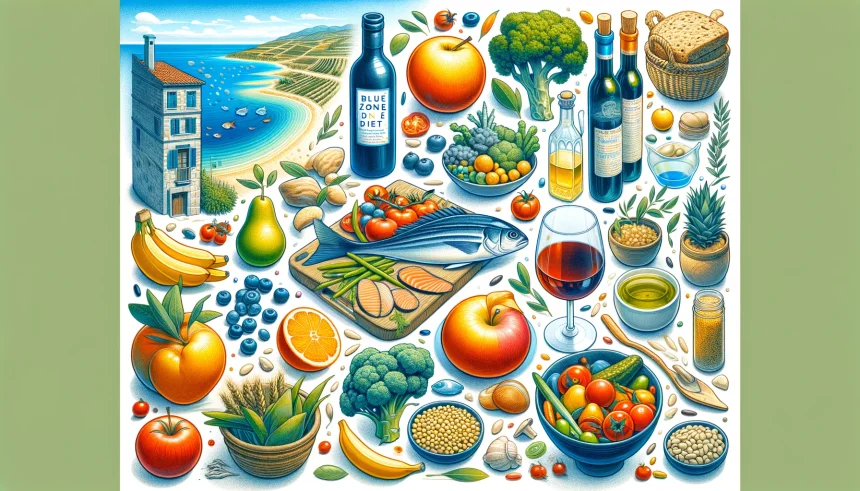The Blue Zone Diet, drawing inspiration from the longevity-nurturing culinary practices of the globe’s Blue Zones, stands as a beacon of dietary wisdom. These regions, celebrated for their denizens’ remarkable lifespan and scant chronic disease rates, have been meticulously studied by Dan Buettner, a luminary in the realm of National Geographic exploration and authorship. Spanning from Okinawa in Japan to the pastoral landscapes of Sardinia, Italy, and extending to Nicoya in Costa Rica, Icaria in Greece, and Loma Linda in California, USA, these enclaves offer a blueprint for a life of sustained health and vitality, deeply intertwined with their dietary ethos.
The Edicts of Plant-Centric Consumption
At its core, the Blue Zone Diet is anchored in a profound reliance on the bounty of the earth. A cornucopia of fruits, legumes, verdant vegetables, whole grains, nuts, and seeds forms the bedrock of this diet, delivering an abundant spectrum of essential nutrients. This allegiance to plant-centric nourishment is linked with a diminution in the prevalence of heart disease, diabetes, and certain malignancies, heralding a paradigm of disease prevention through diet.
The Judicious Inclusion of Animal Fare
The Blue Zone Diet, while not advocating for strict vegetarianism, espouses a measured inclusion of animal-derived edibles. Fish, lean meats, and dairy are consumed in modest quantities, infrequently, ensuring a harmonious blend of the nutritional merits of animal products with the salubrious advantages of a plant-dominated diet.
The Crusade for Unadulterated Foods
Central to the Blue Zone Diet is the celebration of foods in their unrefined, whole state, eschewing processed counterparts laden with additives. This principle champions the consumption of foods in their pristine form, optimizing nutrient intake and sidestepping the pitfalls of processed fare.
The Embrace of Wholesome Lipids
Omega-3 fatty acids, with their profound cardiovascular and cognitive benefits, constitute a cornerstone of the Blue Zone Diet. Olive oil, avocados, and a cadre of nuts and seeds are the diet’s lipid linchpins, especially in Mediterranean locales like Sardinia and Icaria.
The Modest Dairy and Meat Doctrine
Inhabitants of the Blue Zones are characterized by their sparing intake of dairy and red meat, diverging from Western dietary patterns. Dairy, when consumed, often takes the form of fermented products like yogurt, offering gut-friendly probiotics, while red meat is reserved for rare occasions.
Legumes as the Protein Pillar
The Blue Zone Diet elevates legumes to a primary protein source, incorporating beans, lentils, and peas as daily staples. This not only fosters satiety but also plays a role in weight management, courtesy of their fiber and protein content.
Caloric Intake with Mindfulness
The ethos of “Hara Hachi Bu,” or eating until 80% full, exemplifies the Blue Zone’s commitment to caloric moderation. This practice curtails overindulgence and champions a balanced approach to food intake.
Wine with Wisdom
Moderation guides the consumption of wine, especially red, within several Blue Zones. Imbibed with meals, red wine’s antioxidants, like resveratrol, are lauded for their cardiac benefits, aligning with the diet’s overarching principle of balance.
In Summation
The Blue Zone Diet transcends mere nutritional guidelines, weaving itself into the broader tapestry of lifestyle choices that include physical activity and social connectivity. It beckons individuals towards a diet replete with balance and wholesomeness, potentially elongating life and enriching its quality. This dietary approach illuminates the profound impact of conscientious eating on health outcomes, advocating for a lifelong commitment to nutritional excellence.








